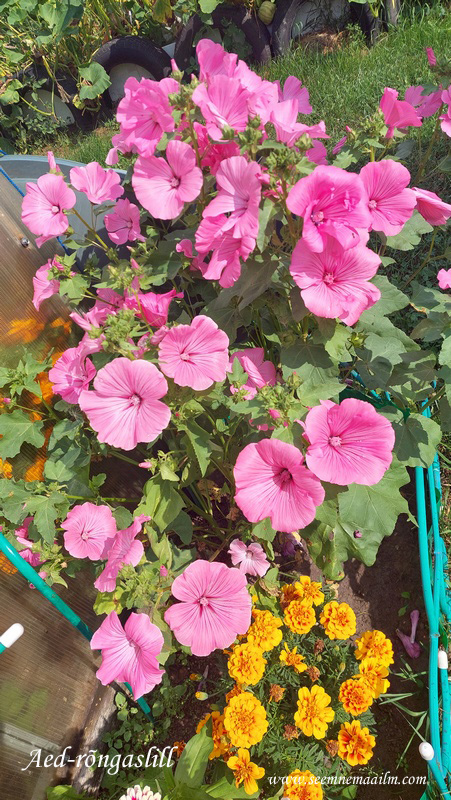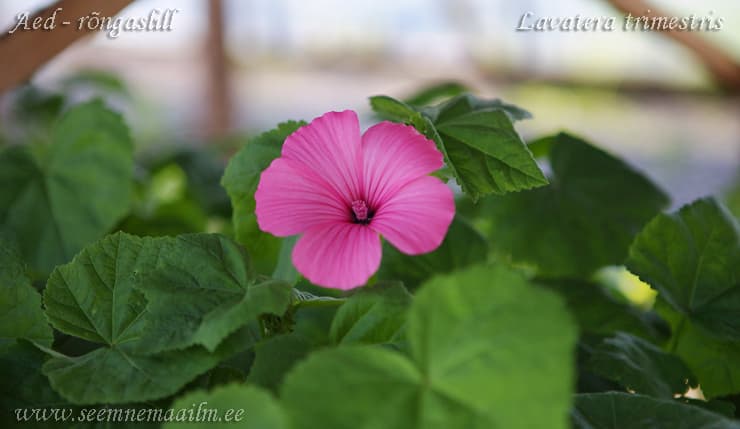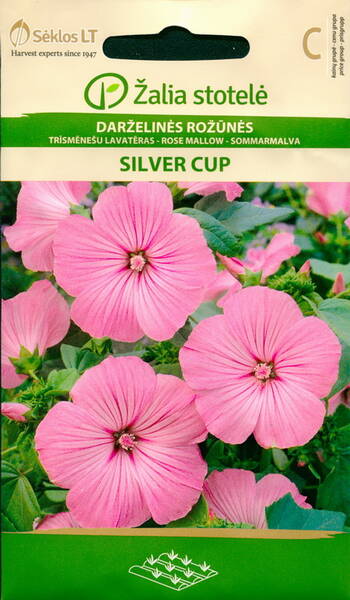Large and charmingly shiny flowers!
Plant height of this variety is about 60 cm.
1.0 g = 150 seeds.

Homeland: Southern Europe, Syria, North Africa. An annual growing in the form of a powerful, branched plant up to 120 cm tall. The lower leaves are rounded or cordate, crenate-toothed along the edge, the upper leaves are three-five-lobed. Flowers are solitary, funnel-shaped, up to 10 cm in diameter, located in leaf axils, most densely in the upper part of the stem. Peduncles of the lower flowers are longer than those of the upper ones. Corolla five-lobed, white, pink or carmine. Blooms profusely from July to autumn. In culture since 1620. In 1 g up to 150-200 seeds.
Location: light-requiring, cold-resistant and drought-resistant.
Soil: undemanding, but grows best in loose, not very fertile soil. In this case, their shoots are not excessively stretched, and flowering becomes massive and intense.
Care: Lavatera does not tolerate waterlogging, but with prolonged drought, the plants are regularly and abundantly watered. The stems of tall varieties are tied to stakes. To stimulate the formation of new buds, faded shoots are cut off. Top dressing is required only on very poor soils, no more than once every 4-8 weeks.
Reproduction: sowing seeds in open ground in early spring. Seedlings appear in two weeks at a temperature of +15°C. Young plants are planted at a distance of 25-30 cm from each other.
Usage: very effective in group plantings, mixborders. This magnificent plant with large flowers, as a rule, is planted in a flower garden with bright annuals, where it always attracts the attention of anyone who happens to be around. Blooming shoots can be cut and included in bouquets.
Partners: combined with species, blooming purple and blue flowers (sage, vervain, delphinium).

Annual mallow, Rose Mallow.












